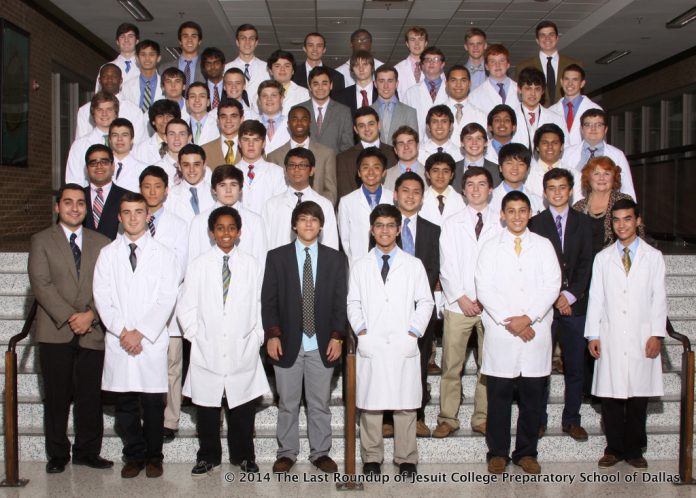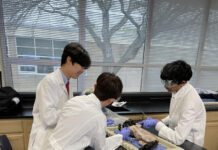January 23rd marked the start of the clinical rotations for Medical Society members at Texas Health Presbyterian Hospital of Dallas. Earlier in the year, the clinical rotations were put on hold as a result of the devastating Ebola outbreak, putting the welfare of students above all. However, after Dallas had been officially declared Ebola-free, and the hospital safe from infection, the excitement once again started in the hearts of Medical Society students. This excitement turned into reality as the hospital IDs were handed out and the Jesuit-made scrubs were ordered.
Designed for students interested in a career in the medical field, clinical rotations were created 12 years ago to give juniors experience in many different areas of the medical field. Mr. Max von Schlehenried, one of the directors for the Jesuit Medical Society, said that the rotations were created so that students “could see if medicine was something they could see themselves doing in life – all aspects of medicine, not just being a physician.” To be a part of clinical rotations, juniors in the Medical Society applied at the beginning of the year, with only a limited number of students selected to participate. The rotations all take place at Presbyterian Hospital of Dallas at the end of each month, ranging from some rotations that start at 7 in the morning to other rotations that begin at 1 in the afternoon.
The greatest part about clinical rotations is the multitude of professions students are able to experience firsthand. According to Mr. von, he has gotten great feedback from many students, saying that “a few people have seen robotic surgeries, really cool procedures on wounds and bones, got to meet some cool technical staff and even follow a security officer around into some interesting places in the hospital. You really get to see how the hospital functions – such a multifaceted machine.” For Mr. von, “the surgeries are always the most impressive because of the sensation of seeing a living person suspended and opened up in order to fix something vital. It’s amazing to see a live human being being ‘repaired.’ It almost sounds funny when you say it like that. The wound care clinic is cool too – you get to see some awesome and really gross stuff – if you’re into that, of course.”
William Chu ’16, one of the students who attended the rotations, commented that he “really enjoyed my rotation because the doctor I was shadowing really delved into what it was like working in the medical field, explaining the whole process of how to get in, what you have to do, and how many years of medical training are necessary. He kept emphasizing that everything you do has to be 100% perfect, you can’t make a single mistake when someone’s life is in your hands.”
Joshua Cobler ’16 also gave his opinion on clinical rotations: “I think the rotations are a really great experience since I get to see medical work firsthand. My last one was in the post-anesthesia care unit where I followed nurses through a typical day of caring for patients after surgeries. It was a little slow at first, but I think that was probably good since the nurses that I was with were able to explain a lot more to me about how they do their jobs. I like how in each rotation, you get to go to a different part of the hospital. It really helps you see the wide variety of options within the medical field. It’s not all just the popular specialties we normally think of, like surgery or cardiology.”
In order to give students as many opportunities to experience different aspects of the medical field as possible, the Medical Society has scheduled a total of six rotations this school year, once a month from January through June. The next rotation date is scheduled for Friday, March 27.






